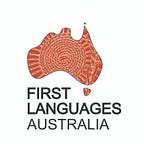Reclaiming the Dhurga language
By ABC Open Producer Vanessa Milton for ABC Mother Tongue, 15 May 2015
Kerry Boyenga grew up speaking Dhurga. As a kid, she thought that the words that she used at home — a snake was a gurri, a dog was a mirrigan — were slang. It was only as an adult that she realised that these words are part of the Dhurga language.
She now teaches Dhurga to primary school students, after many years spent researching and reclaiming the language and developing teaching materials.
It all began when she was a teacher at Broulee Primary School. The school was having trouble finding a German teacher, and Kerry suggested she could teach the children Dhurga.
This snowballed into a major language revitalisation project over a number of years, with three linguists involved, and an exhaustive process of archival and first-hand research, and consultation with Elders, who weren’t allowed to speak the language when they were younger. Kerry worked on the project with her brother, Waine Donovan, who also taught at Broulee Public, and her sister Patricia Ellis, who now teaches Dhurga at tertiary level.
“We were learning the language as we went. We were surprised at how much we already knew, but we learnt about the structure of the language, our alphabet system. It made us feel proud that what we were speaking actually is a complete language.”
One of the linguists who worked with Kerry, Jutta Besold, made Dhurga and neighbouring language Dharawal the focus of her doctoral thesis, and gave Kerry and Patricia her notes at the end of the project. With Jutta’s notes and their own research, they now have enough material to put together a Dhurga dictionary.
Kerry says “It was very timely. We were fortunate that at the time that we started this, we had a lot of Elders in our community around. If we hadn’t done it when we did, their knowledge would have been lost because sadly, most of those Elders who approved the program and were involved in it have now passed away.”
Kerry is now teaching at St Mary’s Primary School in Moruya. There are 33 Indigenous students currently studying at the school, but all Kindergarten and Year 1 students, both Indigenous and non-Indigenous, are learning Dhurga.
“It’s about being inclusive, sharing with non-Indigenous people, and the language having a presence in the school. When you teach language, you’re not just teaching words and how to say things, you’re teaching culture as well. It’s a valuable experience for all the children.”
Kerry says she’s had parents stop her in the street to say Walawaani, the Dhurga greeting which means “I hope you had a safe journey here”, or “I hope you have a safe journey home”.
Without Kerry and others that have worked hard to revive the language, the future of Dhurga would be very uncertain.
“Most Aboriginal kids will use some words at home, it might just be the word for a ghost, which is gunja. We have those words and we’ve always used them, but I don’t think many of the children have a lot of language, because sadly it hasn’t been passed on and it’s been allowed to die out.
“Now when I’m teaching, I often sit and think about the days when I had 10 Elders sitting at the back of the classroom, making sure I was doing the right thing, nodding their heads when I told the children something they thought was important. And I miss those old people. If it wasn’t for them, we wouldn’t have what we have.”
Kerry is hopeful that in future Dhurga will be taught in all the local schools, and she is looking forward to seeing the Dhurga dictionary published.
Listen to an inspiring radio interview with Kerry, and follow the links below for two language lesson videos made with Kerry and her students at St Mary’s Public School, Moruya.
